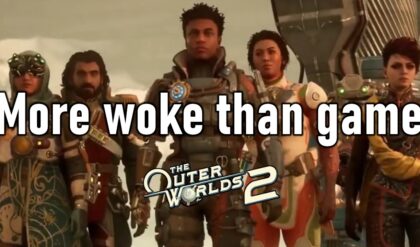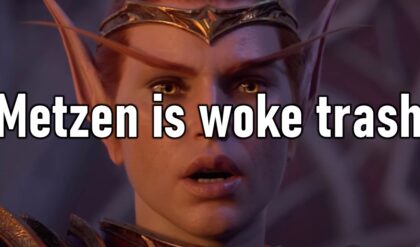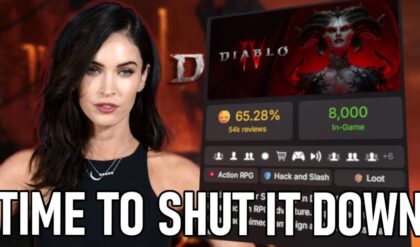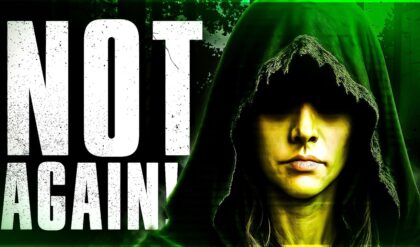DeSantis’ Green Light to Drive Over Protesters Ignites Firestorm in Florida
In a provocative statement that has sent shockwaves through Florida and beyond, Governor Ron DeSantis has reaffirmed a controversial law allowing drivers to strike protesters blocking streets if they feel their lives are in danger. The remarks, made in June 2025, have reignited fierce debates over a 2021 “anti-riot” law that critics argue endangers free speech and public safety. As social media erupts with outrage and support, the governor’s words have thrust Florida into the center of a national conversation about protest rights, vigilante violence, and the limits of self-defense.
The Context of the Controversy
DeSantis’ comments refer to Florida’s Combating Public Disorder Act (HB 1), signed into law in April 2021. The legislation, introduced in the wake of 2020’s Black Lives Matter protests, includes provisions granting civil immunity to drivers who injure or kill protesters while “fleeing for safety” from a perceived threat. The law defines a “riot” as a gathering of three or more people engaging in violent or disorderly conduct that causes injury, property damage, or imminent danger. By framing such situations as threats, the law shields drivers from lawsuits, though criminal liability remains possible if intent to harm is proven.
The governor’s recent remarks, made during a press conference, emphasized that Floridians should not feel trapped by “mobs” blocking roads. He argued that the law protects drivers who act out of necessity, pointing to incidents where protesters have surrounded vehicles, creating fear for motorists. The timing of his statement coincides with heightened national tensions over immigration and racial justice protests, with some speculating it was meant to rally his conservative base ahead of potential 2028 presidential ambitions.
The 2021 Law and Its Origins
The 2021 law emerged from a turbulent period following the killing of George Floyd in May 2020, which sparked nationwide demonstrations against police brutality. In Florida, protests in cities like Miami, Tampa, and Orlando were largely peaceful, though some incidents involved property damage or clashes with law enforcement. DeSantis, aligning with a national Republican push for “law and order,” proposed HB 1 to deter what he described as “disorderly assemblies” that disrupt public life.
Key provisions of the law include felony charges for blocking highways, enhanced penalties for assaulting police during protests, and restrictions on bail until a first court appearance. The driver immunity clause, however, has drawn the most scrutiny. Supporters argue it protects motorists caught in chaotic situations, citing cases where drivers faced harassment or violence from protesters. Critics, including civil rights groups, warn it encourages vigilante behavior, potentially legitimizing attacks like the 2017 Charlottesville incident, where a white supremacist killed protester Heather Heyer by driving into a crowd.
In September 2021, a federal judge temporarily blocked parts of HB 1, citing violations of First Amendment rights to free speech and assembly. However, DeSantis vowed to appeal, and the law’s driver immunity provision remains in effect pending further legal challenges. Since its passage, similar laws have appeared in states like Oklahoma and Iowa, reflecting a broader Republican effort to curb protest activities.
Public Safety or License to Harm?
DeSantis’ reaffirmation of the law has reignited questions about its implications. Proponents argue it addresses real dangers faced by drivers. In 2020 and 2021, over 100 incidents nationwide involved vehicles striking protesters, often in tense encounters where drivers claimed fear for their safety. In one Florida case, a driver who drove through a Tallahassee protest in 2020 faced no charges after prosecutors deemed his actions self-defense. Supporters of HB 1 say such cases justify protecting drivers who feel threatened, especially when emergency vehicles or commuters are delayed.
Opponents, however, see the law as a dangerous overreach. The definition of a “riot” as involving just three people is criticized as overly broad, potentially criminalizing peaceful protests. The driver immunity clause, they argue, lowers the threshold for violence by allowing subjective claims of fear to justify deadly actions. Civil rights advocates point to the risk of abuse, particularly against marginalized groups like Black and Latino protesters, who are often targeted by law enforcement and face heightened scrutiny during demonstrations.
The law’s impact on protest participation is another concern. Fear of arrest or violence may deter activists from taking to the streets, chilling free speech. In Florida, where protests over immigration policies and racial justice continue, organizers report increased caution among participants, wary of both police crackdowns and emboldened drivers. The psychological toll is significant: protesters must now weigh the risk of physical harm against their right to assemble.
Social Media and Public Reaction
DeSantis’ comments have sparked a polarized response online, particularly on platforms like X. Some users praise the governor for prioritizing public safety, arguing that protesters who block roads endanger lives and deserve consequences. Others condemn his stance as fascist, accusing him of endorsing violence against dissenters. Posts on X reflect deep divisions, with some calling the law a necessary deterrent and others labeling it a “license to kill” aimed at silencing Black and brown voices.
The controversy has also drawn comparisons to historical efforts to suppress protest, such as Jim Crow-era laws restricting Black gatherings. Critics argue that HB 1 disproportionately targets communities of color, who are more likely to protest systemic issues like police violence or immigration enforcement. The racial subtext is evident in online debates, where some users frame the law as a response to Black Lives Matter, despite its broader application.
Broader Political Implications
DeSantis’ remarks are not just about traffic or protests—they’re a calculated political move. Since 2020, he has positioned himself as a champion of conservative values, from challenging COVID-19 mandates to restricting school curricula on race. The “anti-riot” law and his recent comments reinforce this image, appealing to voters who prioritize order over activism. With speculation about a 2028 presidential run, DeSantis’ tough-on-protest stance aligns with a Republican platform emphasizing law enforcement and traditional values.
Yet, the strategy carries risks. Florida’s diverse population, including growing Latino and Black communities, may view the law as antagonistic. DeSantis’ 2022 redistricting plan, which reduced Black representation in Congress, and his creation of an election police force targeting Black voters have already drawn criticism. His protest law comments could further alienate moderate and minority voters, complicating his national ambitions.
Legal and Ethical Questions
The driver immunity provision raises complex legal and ethical issues. Florida’s “stand your ground” law already allows deadly force in cases of perceived threat, but HB 1 extends this logic to vehicles, a potentially lethal weapon. Courts have yet to fully test the provision, but legal scholars warn it could complicate prosecutions by shifting the burden onto prosecutors to prove a driver’s intent was malicious, rather than self-defensive.
Ethically, the law blurs the line between self-defense and aggression. A driver’s subjective fear, influenced by bias or misinformation, could justify harming protesters exercising their constitutional rights. The 2017 Charlottesville attack looms large: the driver claimed fear, yet was convicted of murder. HB 1’s ambiguity risks creating gray areas where similar incidents go unpunished, particularly if victims are demonized as “rioters.”
The Road Ahead
As Florida braces for more protests—whether over immigration, racial justice, or other issues—HB 1’s shadow looms large. Activists are adapting, organizing in less confrontational ways to avoid legal repercussions. Meanwhile, DeSantis shows no signs of backing down, framing the law as a bulwark against chaos. His appeal to the 11th U.S. Circuit Court to reinstate blocked provisions signals a long legal battle ahead.
For ordinary Floridians, the law creates a tense reality. Drivers may feel emboldened, while protesters face heightened risks. The mother caught in a New York City protest, mocked for needing to work, illustrates the human cost of such conflicts. In Florida, where roads are lifelines for commuters and emergency services, the stakes are even higher.
DeSantis’ comments have forced a reckoning with how society balances order and dissent. Is a driver’s fear justification for deadly force? Can protests disrupt without endangering? These questions defy easy answers, but they demand dialogue over division. As Florida navigates this fraught terrain, the nation watches, wary of a precedent that could reshape the right to protest.





